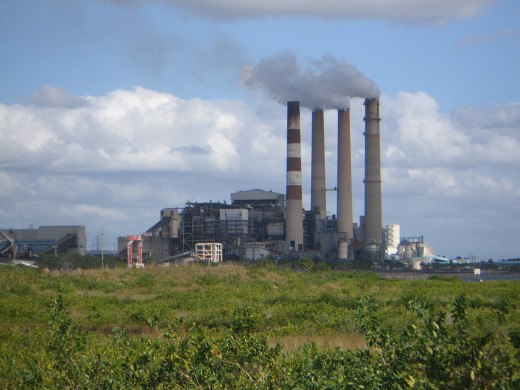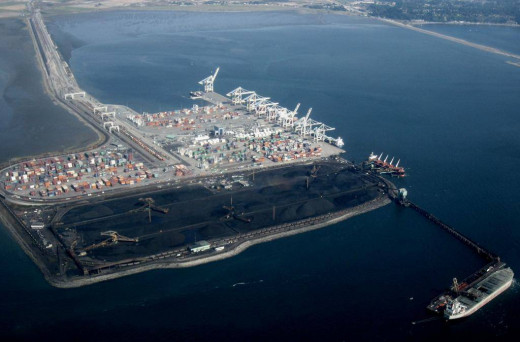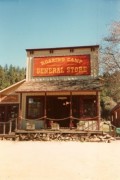Coal: Is It Really That Bad?
The answer is NO it isn't that bad. Only when actually burning it, does coal become an issue, but there are issues with burning any kind of fuel.
What is Coal?
Coal is fossilized plant and animals that have been compressed under extreme heat and pressure for millions of years. When burning this fossil fuel produces CO2. It is known as the black diamond as it is worth so much.
Coal

How Dirty is it?
Coal is dirty, no doubt, and it is messy, however during transport precautions have now been put in to place to lessen the environmental impact, and even nature helps. By wetting the coal down the coal dust will not be as prevalent. The trains travel thousands of miles and within a few miles of the mine all the dust has settled.
Transporting Coal
Coal has long since been transported by rail. In fact some of the earliest railroads were built in England and Wales in the early 1800s to carry coal an slate out of the mines, now these were not steam powered railroads, but mule or horses.
Today, the four major railroads in the United States(Union Pacific, Burlington Northern Santa Fe, CSX and Norfolk Southern) all transport massive amounts of coal from the Powder River coal Basin MT, SD,NE, and WY (UP and BNSF) and the Appalachian coal mines in West Virginia and Virginia (CSX and NS).
In 2012 the BNSF alone hauled 2.2 million coal shipments and 90% of those shipments rolled out of the Powder River region. Those shipments accounted for 10 percent of the electrical output of the US. That's one railroad powering 10% of the nation.
Coal Trivia
Todays Coal comes from two major regions of the country Which two are they?
Hazards of Moving coal in America
Coal is a mess always has been always will be, but if you listen to the stories coming out of the Northwest some people are acting like a lump of coal is a nuclear bomb rolling on the rails. This is not the case folks but Portland Ore has band the movement of coal trains within city proper, and other cities are trying to follow suit.
A coal train is no more hazardous than a grain train or general merchandise freight that also ply the rails on a daily basis. The clean up isn't as bad during a derailments, as say oil tank cars or other flammable material. Just scoop it up and haul it away.
I may sound bias, and maybe I am, but try scooping oil up with a shovel and putting in a bucket or truck, it doesn't work that well and if oil were to get into the water, well that's a whole other mess.
Here is list of more toxic cargo hauled by US railroads every day:
- CLASS 1 - EXPLOSIVES
- CLASS 2 - GASES
- CLASS 3 - FLAMMABLE AND COMBUSTIBLE LIQUIDS
- CLASS 4 - FLAMMABLE SOLIDS AND REACTIVE SOLIDS/LIQUIDS
- CLASS 5 - OXIDIZERS AND ORGANIC PEROXIDES
- CLASS 6 - POISONOUS (TOXIC) MATERIALS AND INFECTIOUS SUBSTANCES CLASS 7 - RADIOACTIVE MATERIALS
- CLASS 8 - CORROSIVE MATERIALS
- CLASS 9 - MISCELLANEOUS HAZARDOUS MATERIALS
There are not that many hazards to hauling rock.
The Coal Train
The coal train today is pretty standard across North America. One hundred to 120 coal hoppers hauled by anywhere from 3-9 locomotives depending on the terrain. A 100 car coal train bound for the Mid west from Wyoming might have 3 locomotives on the front and one on the rear, two on the front and two on the rear. The same coal train moving from Wyoming to export in British Columbia will have 5-6 mid train helpers added by the Montana Rail Link to lift it over Bozeman Pass.
Lets say for instance that the coal train disappeared, in three day the generating plants relying on the coal, would seize operation, and 57 percent of the country would go dark, including cities such as Chicago, Indianapolis, Nashville, Atlanta, and numerous others. No amount of trucks could keep all the plants supplied with the amount of coal that is consumed.
If we look at an average dump truck that would haul coal on the roads it would be a 40 ton truck (the max for US roads), this equates to 2.5 trucks for one 100 Ton Coal car, multiply that out by 100 as that is the average coal train and that means that there would be 2500 trucks hauling coal over our roads, and that is just 1 train worth. Over 100 trains Daily enter the Powder River Coal Basin empty and leave loaded, that is over 10,000 coal cars and over 1,000,000 tons of coal being shipped daily out of the basin. That adds up to 25000 trucks leaving the basin daily. This does not figure in the other major coal mining areas in the US.
The coal trains are treated today with a layer of chemical that seals the top of the loads to that the coal dust doesn't fly off.
Power Plant

US coal fired plants
For those of you reading this in the Midwest East and South, the electricity you are using is being produced by coal. Fifty Seven percent of the population receives their electricity from coal fired power plants an all of that is received by rail. 100 plus cars are loaded with 100 Tons of coal each. One train can fire a plant for only a few days, which means to keep stock piles up and the furnaces bubbling at least one coal train needs to unload every day or so. The plants have been required to place scrubbers on the smokestack to catch the CO2 that was being released into the atmosphere. Today what you see is just water vapor, much like the nuclear plants. However there is very toxic waste coming from those plants but that's a different hub.
Quick Facts about PRB Coal
- The electricity used by one out of every five homes and businesses in the US is produced from coal mined in Wyoming.
- Over 100 coal trains enter Wyoming empty and leave loaded and bound for all points daily.
- Nearly one in six Wyoming workers are directly or indirectly employed in coal development.
- The largest US coal mine, Black Thunder, lies within the Wyoming portion of the Powder River Basin
http://www.blm.gov/wy/st/en/programs/energy/Coal_Resources/PRB_Coal.html
Tsawwassen bc coal port

Local Area Impact
I live in an area that is talking about building a bulk commodities trans-loading port, that would ship coal and grain overseas. This would add 16 coal trains a week to a mostly single track route north of Everett Washington. There are those that are afraid of the congestion that more trains might cause, However I will say that in the 14 years I have lived in this town, believe it or not I have never been stuck by any train, coal or otherwise, unless I planned it.
The other argument that some are giving is that the coal dust will harm the community, however there are coal trains running through the town and have been for 20 years exporting coal to China through the Roberts Bank Superport. This port doesn't only ship coal, but other bulk commodities such as grain. Going down by the tracks there is no sign of Coal dust coating anything, If there was any it is some that may fall from the cards that have a light covering due to the fact that they haul the stuff.
© 2013 Clayton Hartford








